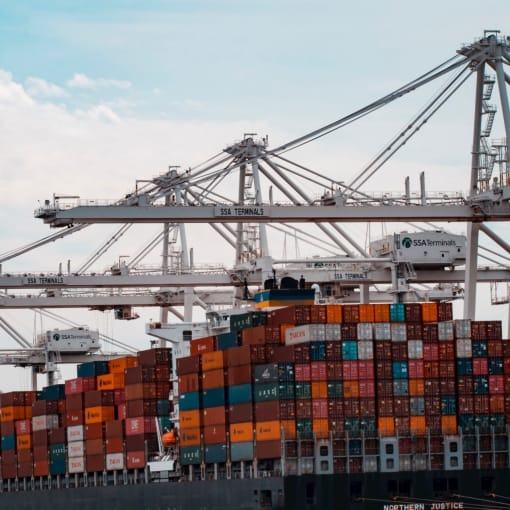Streamlining import/export compliance with content services
Read how to streamline the creation, management and storage of import or export documentation.

Creating, managing, and storing import or export documentation is a pain. Nobody likes doing it; it’s cumbersome, complex work that is prone to errors. In our experience, many, if not most, make the work much harder than it needs to be, and they also make more errors than they care to admit. This blog post explains how to radically simplify documentation work, reduce costs and eliminate errors by going digital using content services.
Import/export compliance is changing
Because you are reading this, you likely already know that any import or export process typically involves generating a bill of lading, a commercial invoice, a declaration, a certificate of origin, and possibly an insurance certificate. There will likely be at least three copies of each, and the requirement is to archive them securely for at least five years. Typically, most of these documents have been paper-based. Even though regulators worldwide have been moving at a fast pace to accept digital records, the requirement to store paper copies for years after the transaction has meant there was little appetite for change. However, now that most, if not all, jurisdictions allow you to archive digital files rather than hard copy originals, there is an opportunity to radically simplify the way we work.
You don’t need the paper
Think about it this way: If you don’t need to store paper documents, you shouldn’t — and for multiple reasons. It’s much cheaper and less time-consuming to store digital documents, and you can essentially automate the archiving process and easily retrieve anything you need at a future date. It’s also much easier and cheaper to stay compliant with digital archiving than with paper documents.
Replacing filing cabinets, folders and shelves with a digital archive system makes sense on so many levels that, in our estimation, it’s a must-do for any firm that does importing and exporting.
However, it also raises a question: If the result is an archived digital file, can you eliminate the original paper version and digitize the documentation process from end to end?
The answer to this is yes, but with some qualifications.
Retention rules
You should replace paper documents with digital-native documents any time you can. For some organizations, that could mean replacing 90% of paper-based import and export documents with digital documents. For others it may be only 50%, depending on where and what they import and export.
Although there are organizations like the World Trade Organization (WTO) and U.S. Customs and Border Protection (CBP), as well as regulations like Export Administration Regulations (EAR), that in theory bring some uniformity and overall structure to the process, the reality is that almost every country has its quirks and variations. For example, Colombia and Brazil have been pushing hard to digitize the entire process for some time, while some other countries have been slow to embrace change.
But whether at 50% or 90%, it’s worth shifting from paper to digital. The benefits we hear cited most often are a sharp decrease in both errors and costs.
How many shipping problems/delays can be tolerated?
Consider for a moment that the number one reason for delays and shipment problems is errors in the associated paperwork. Minor mistakes like an incorrect address, the wrong classification code or an inaccurate packing list are costly. Even simple typos can prove expensive, and of course, importing and exporting is complicated. Add to this the fact that even the most experienced firms often lack full knowledge of the various rules and regulations that may apply to any shipment.
By moving to a digital-first approach to documentation, you can automate rules in the document creation process, which in itself can deliver a huge business benefit. Consider also that every set of import or export documents contains replicated data, the name of the parties, quantities and values. Manual key entry or handwriting the information into a form will guarantee errors, even with the most experienced administrators.
Automation can go a long way toward eliminating common errors. Similarly, smart automation will typically generate far more accurate documents than humans in meeting complex but rules-based requirements.
Related articles
Digitization delivers compliance benefits
The bottom line is that nobody wants to store mountains of paper documents for years on end, or for their shipment to be placed in the “orange channel,” misdelivered, or to spend weeks and months arguing about incorrect quantities and prices. Similarly, nobody wants a reverse supply chain loaded with goods that should never have been sent in the first place.
Even a slight reduction in errors can deliver a significant financial benefit. Furthermore, addressing the end of the document process by moving the archive to digital will save you time and money, as well as lower the burden and risk of any compliance audit. Shifting your import and export documents to digital is well worth the relatively small effort required.
Lastly, and perhaps most excitedly, global supply chains are steadily embracing blockchain — it’s on the horizon in North America but already a reality for many in China, Latin America and the Middle East. Blockchain can deliver even more significant efficiency gains and cost savings, virtually eliminating the need for multiple copies of documents and automatically generating an immutable archive.
Indeed, for some the future is already here.













